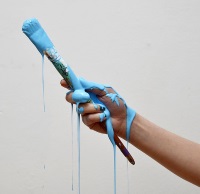Or search by topic
Number and algebra
Geometry and measure
Probability and statistics
Working mathematically
Advanced mathematics
For younger learners
Mixing More Paints



Mixing More Paints printable worksheet
This problem follows on from Mixing Paints.

A decorator can buy blue paint from two manufacturers.
- Paint A is made up from dark blue and white paint in the ratio $1:4$
- Paint B is made up from dark blue and white paint in the ratio $1:5$
She can mix the paints to produce different shades of blue.
What is the least number she would need of each type in order to produce blue paint containing dark blue and white in the following ratios:
$3:14$
$10:43$
You may wish to experiment with the interactivity below.
Another decorator buys blue paint from two different manufacturers:
- Paint C is made up from dark blue and white paint in the ratio $1:3$
- Paint D is made up from dark blue and white paint in the ratio $1:7$
$3:14$
$10:43$
Is it always possible to combine two paints made up in the ratios $1:x$ and $1:y$ and turn them into paint made up in the ratio $a:b$ ? Experiment with a few more examples.
Can you describe an efficient way of doing this?
You may also like
Golden Thoughts
Rectangle PQRS has X and Y on the edges. Triangles PQY, YRX and XSP have equal areas. Prove X and Y divide the sides of PQRS in the golden ratio.
At a Glance
The area of a regular pentagon looks about twice as a big as the pentangle star drawn within it. Is it?
Contact
A circular plate rolls in contact with the sides of a rectangular tray. How much of its circumference comes into contact with the sides of the tray when it rolls around one circuit?

